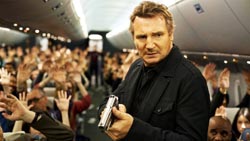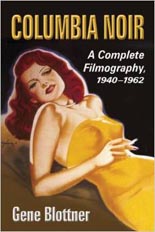 According to Gene Blottner in Columbia Noir: A Complete Filmography, 1940-1962, the Columbia Pictures studio proceeded with caution when it came to making noir pictures. Nonetheless, it eventually produced some of the genre’s all-time classics: The Lady from Shanghai, Experiment in Terror, Anatomy of a Murder, On the Waterfront and Gilda (poster art from which adorns the McFarland & Company paperback’s cover). Each of these and 164 other films — revered to forgotten — gets its own entry, so why isn’t Blottner’s book more interesting? Honestly, it suffers from the same drawbacks as Ronald Schwartz’s recent Houses of Noir: Dark Visions from Thirteen Film Studios, from the same publisher: There’s too little substance. More ink is given to beat-by-beat plot summaries and complete cast listings than anything that passes for commentary and criticism. And in covering a single studio’s output, it’s even too niche to work well as reference material. I didn’t dislike it so much as I didn’t get anything from it.
According to Gene Blottner in Columbia Noir: A Complete Filmography, 1940-1962, the Columbia Pictures studio proceeded with caution when it came to making noir pictures. Nonetheless, it eventually produced some of the genre’s all-time classics: The Lady from Shanghai, Experiment in Terror, Anatomy of a Murder, On the Waterfront and Gilda (poster art from which adorns the McFarland & Company paperback’s cover). Each of these and 164 other films — revered to forgotten — gets its own entry, so why isn’t Blottner’s book more interesting? Honestly, it suffers from the same drawbacks as Ronald Schwartz’s recent Houses of Noir: Dark Visions from Thirteen Film Studios, from the same publisher: There’s too little substance. More ink is given to beat-by-beat plot summaries and complete cast listings than anything that passes for commentary and criticism. And in covering a single studio’s output, it’s even too niche to work well as reference material. I didn’t dislike it so much as I didn’t get anything from it.
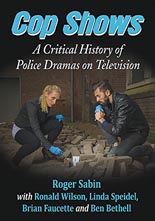 From Dragnet to Justified, Cop Shows: A Critical History of Police Dramas on Television gives 19 mini-histories of some of the tube’s all-time greatest series of the men and women (but mostly men) behind the badge. Written largely by Roger Sabin, with assists from Ronald Wilson, Linda Speidel, Brian Faucette and Ben Bethell, the trade paperback proves a fun read for Gen X-ers who grew up on the 1970s prime-time powerhouses — both live and in reruns — and then played as the characters throughout the neighborhood (um, not that I’m speaking from experience), as a bulk of the contents covers that era forward. Although the collection could be read cover to cover, I found it worked best for me by skipping around, based on which programs I either liked the most or wanted to learn more about. Of particular note are Sabin’s chapter on CSI: Crime Scene Investigation and Fawcett’s on Miami Vice, reminding us how revolutionary these programs are and were. Speaking of the R word, one wishes Sabin and company would have involved the insight of their subjects’ creators, à la Alan Sepinwall’s The Revolution Was Televised; this’ll do for true police-tube aficionados, even if it is by no means essential. (One also wishes McFarland had found stock photography for the cover that wasn’t embarrassing.)
From Dragnet to Justified, Cop Shows: A Critical History of Police Dramas on Television gives 19 mini-histories of some of the tube’s all-time greatest series of the men and women (but mostly men) behind the badge. Written largely by Roger Sabin, with assists from Ronald Wilson, Linda Speidel, Brian Faucette and Ben Bethell, the trade paperback proves a fun read for Gen X-ers who grew up on the 1970s prime-time powerhouses — both live and in reruns — and then played as the characters throughout the neighborhood (um, not that I’m speaking from experience), as a bulk of the contents covers that era forward. Although the collection could be read cover to cover, I found it worked best for me by skipping around, based on which programs I either liked the most or wanted to learn more about. Of particular note are Sabin’s chapter on CSI: Crime Scene Investigation and Fawcett’s on Miami Vice, reminding us how revolutionary these programs are and were. Speaking of the R word, one wishes Sabin and company would have involved the insight of their subjects’ creators, à la Alan Sepinwall’s The Revolution Was Televised; this’ll do for true police-tube aficionados, even if it is by no means essential. (One also wishes McFarland had found stock photography for the cover that wasn’t embarrassing.)
 Kids: Can’t live with ’em, can’t kill ’em! Paraphrased old joke aside, the big screen has served as home to plenty of bad seeds, many of whom have met their demise by the hands of had-it-up-to-here adults, and Markus P.J. Bohlmann and Sean Moreland have edited an entire book on the subject, Monstrous Children and Childish Monsters: Essays on Cinema’s Holy Terrors. As you’d expect, most of the 15 chapters explore examples from the horror genre — Rosemary’s Baby, The Shining, It’s Alive, Orphan and other arguments for birth control — but not wholly; one of the most memorable pieces is Debbie Olson’s live-wire takedown of the Oscar-anointed Precious for “its validation … of the monstrousness of the black female.” Other less-obvious suspects include the chicken baby of Eraserhead, an obscure Beowulf adaptation few have seen and the entirety of Ridley Scott’s CV. (What, no chapter on John Ritter’s Problem Child trilogy?) Variety is the spice of life for this collection; just expect the bun to come out of the oven more academic in tone than its title suggests. —Rod Lott
Kids: Can’t live with ’em, can’t kill ’em! Paraphrased old joke aside, the big screen has served as home to plenty of bad seeds, many of whom have met their demise by the hands of had-it-up-to-here adults, and Markus P.J. Bohlmann and Sean Moreland have edited an entire book on the subject, Monstrous Children and Childish Monsters: Essays on Cinema’s Holy Terrors. As you’d expect, most of the 15 chapters explore examples from the horror genre — Rosemary’s Baby, The Shining, It’s Alive, Orphan and other arguments for birth control — but not wholly; one of the most memorable pieces is Debbie Olson’s live-wire takedown of the Oscar-anointed Precious for “its validation … of the monstrousness of the black female.” Other less-obvious suspects include the chicken baby of Eraserhead, an obscure Beowulf adaptation few have seen and the entirety of Ridley Scott’s CV. (What, no chapter on John Ritter’s Problem Child trilogy?) Variety is the spice of life for this collection; just expect the bun to come out of the oven more academic in tone than its title suggests. —Rod Lott

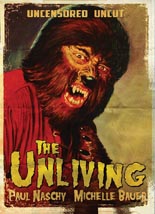
 Officially or not,
Officially or not, 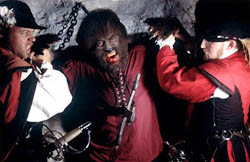
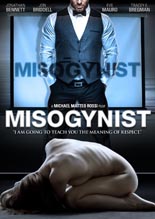
 Not every movie dares open with a quote from 18th-century moralist Samuel Johnson. (Then again, I don’t watch the History channel.) Michael Matteo Rossi’s
Not every movie dares open with a quote from 18th-century moralist Samuel Johnson. (Then again, I don’t watch the History channel.) Michael Matteo Rossi’s 
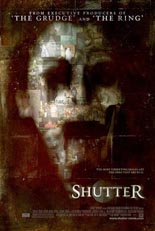
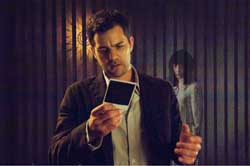
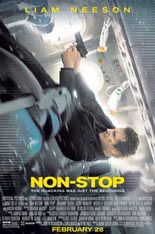
 At least at press time,
At least at press time, 